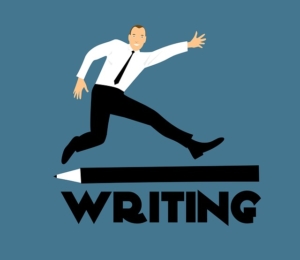5 Simple Techniques for Writing Clear Copy
Summary: Successful copywriters use these five simple strategies to grab their reader’s attention and increase conversions for their clients.
 Most successful marketing copywriters know that the modern web searcher has the attention span of a gnat.
Most successful marketing copywriters know that the modern web searcher has the attention span of a gnat.
Not convinced? Consider this. According to ad data from Chartbeat CEO Tony Haile, you have just 15 seconds to capture the average reader’s attention. And this statistic has held steady for about a decade.
In short, you have very little time to grab your audience’s attention. And, these metrics are similar for both content and sales copy…or whether it’s dispensed online, through email, or in direct mail pieces.
Table of Contents
The secret weapon for all persuasive copy
When it comes to marketing messages, you already know you should use action verbs and avoid a passive voice like the plague. You know you must join the conversation already going on inside your reader’s head. Your headlines and email subject lines must be compelling…big idea should capture imagination…copy needs to use benefits instead of features…and testimonials must be authentic.
And by now, you’re regularly using the 4 U’s of marketing copy for getting your prospect to listen to what you have to say. Yet, there’s another little known shortcut many top writers and marketers use to grab attention. They consider it their secret weapon to address precisely that challenge of attracting your reader and keeping them focused on your message.
And that is, to make sure your copy or content is written as clearly and concisely as possible. As New York copywriting legend Michael Masterson once said, “Good writing is good thinking clearly expressed.”
Clarity feels like relief
And remember, your reader is constantly pulled in all directions. They spend long days working a job…getting their child to an appointment…exercising at the local YMCA…shopping for groceries…heading up a charity—and more.
When it comes to your marketing message, they won’t tolerate the added intrusion if it isn’t clear what you are going to do to help them solve a problem or satisfy a need. So you must be clear and concise. If you cannot connect with them and gain complete understanding of what it is you are writing about in just a few short seconds, they will move on to someone who can.
And make no mistake…there is always someone who can.
 How to know if you’re writing clear copy
How to know if you’re writing clear copy
Instead of sweating it, wondering if you’ll ever grab attention fast, or worrying that the competition will steal your prospects from you, just implement a few of the following proven ‘techniques’ for making your copy or content clear and concise—so your audience can focus on your message, understand how it applies to them, and be motivated to act on it.
1. The big idea. Every piece of copy and content you write should contain a single big idea around which your entire message is focused. Too many competing ideas tend to confuse and frustrate your reader as to what you are actually trying to communicate. And so they leave…before you’re able to even make your offer.
2. The bar stool. Pretend you’re sitting on a bar stool talking to a friend at your local pub. No fancy words. No gimmicky tones. No drama. Just straight-shootin’, authentic, ‘tell it like it is’ conversation that’s easy to hear…and easy to understand.
3. The absent qualifier. Using qualifiers like adverbs are an indication of lazy writing. Why? Because they describe an action—instead of showing it—leaving little to the imagination. This may work in novels, but not in marketing messages. Get your prospect to participate in your conversation by engaging their imagination and stimulating their emotions so they respond to your message by taking the action you intended.
4. The easy read. Whatever word processing software you use, check how difficult your writing is to read. For example, MS-Word readability statistics helps check your writing for reading ease (keep above 60.0) and grade level comprehension (shoot for 7.0 or lower). Shorter sentences and simpler words mean less mental work for your reader, and a higher likelihood they’ll stay with you to the end. Additionally, using an AI detector can help identify whether your writing is too mechanical or lacks a natural, human touch, which can also impact its readability. Tools for AI detection can ensure that your content remains engaging and accessible to your audience.
5. The scan. With so much information to process nowadays, consumers resort to scanning incoming messages to determine relevancy. Keep your introduction short…use subheads to highlight what’s next…break lists into bullet points…and bold-face text to emphasize key points. Giving your reader the ability to scan your message increases their willingness to read—and respond to—your message.
I’ve covered a few other tricks for writing clearer copy in part two of my article on how to write blog posts that get found and get read.
Try just a few of these to start. And practice often. You’ll be writing clear, concise copy and content in no time at all. Alternatively, take a look at the Copywriter Collective talent pool and hire a professional copywriter today.
About the Author

Jerry Bures is a direct-response web copywriter and marketing consultant. Since 2010, he has helped natural health, self-help and business opportunity clients—as well as local small businesses—become more visible, credible and profitable online. Read more.



